In Parts 1 and 2, we posed this question: Of the thousands of toys given to American girls and boys over time, what are the greatest? This writer, a lifelong toy collector and longtime toy columnist, decided to tackle that massive question. We started at the year 1900, we excluded board and card games (surely worthy of their own list), and we excluded athletic equipment. Not every selection may be your particular cup of pretend tea, but each one was chosen according to The Tom Morello Scale of “impact, influence, and awesomeness.” Here are the Greatest Toys from 1979 to today.
1979/1981: Strawberry Shortcake and Care Bears
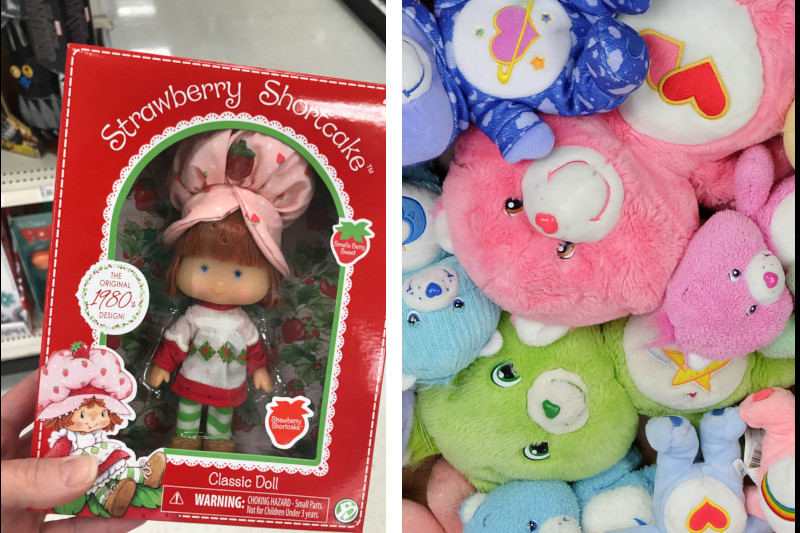
It might seem counterintuitive to include two vastly different ideas as one entry, but both Strawberry Shortcake and Care Bears came to life in the same way: they began as American Greetings cards. Artist Barbi Sargent drew the first version of Strawberry Shortcake, which appeared on a card in 1973. After the look was refined in subsequent cards, the character was adapted into ragdoll form in 1979. As the character and her friends hit animation, toy company Kenner turned the characters into a more figural line of dolls with pet pals, playsets, and an infused scent for each character associated with their name. That toy line was a major success in the 1980s and was later revived in a new form in the 2000s. Over the years, the brand has changed hands several times and may be rebooted again in the near future.
Care Bears began as greeting card characters in 1981, then transitioned to a line of plush toys in 1983. The Bears and their multi-animal cousins proved popular enough for animated feature films, TV cartoons, and a variety of toys, including figures. Some form of the Care Bears has existed in the every decade since, supported by animation, plush toys, and more. A new line by current license holder Basic Fun! debuted in 2020.
1980: Rubik’s Cube
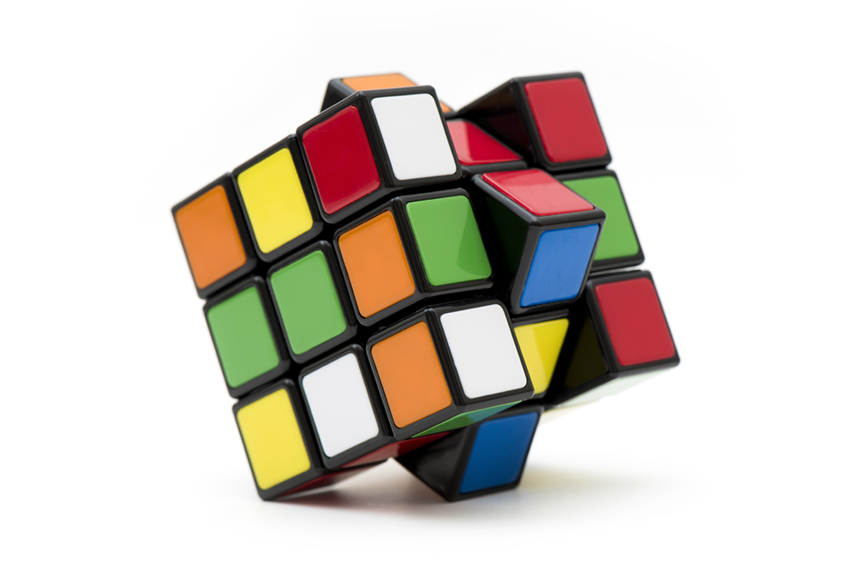
The Post recounted the story of the Rubik’s Cube earlier this year on the occasion of its 40th anniversary. Erno Rubik invented the puzzle cube, which launched worldwide after he made a deal with Ideal in 1979. By 1981, the Cube was a legit phenomenon, selling millions and prompting a cottage industry of best-selling books about how to solve it. Rubik also created the popular Rubik’s Snake and has been active in STEM education; he’s something of a cultural hero in his native Hungary, having received essentially every major civilian honor. His puzzles still sell regularly today.
1982: My Little Pony
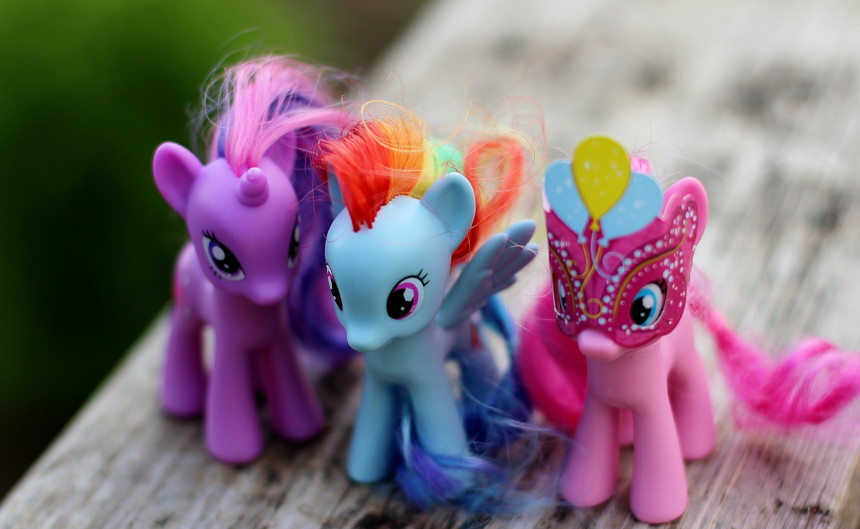
Take small toy horses. Combine with bright colors and catch names. Step back, and watch four decades of fandom grow. That’s essentially the recipe that Hasbro has followed for almost 40 years. Buoyed by cycling generations of devotees and a long-running cluster of animated series that total in excess of 300 episodes, My Little Pony has been able to reach new fans in a variety of age groups.
1982 Cabbage Patch Kids
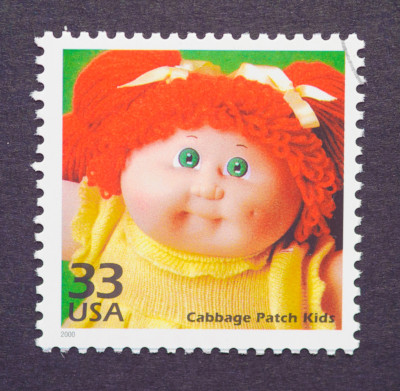
Cabbage Patch Kids were one of the biggest toy fads of the 1980s and have changed companies a remarkable seven times since their 1982 introduction. Xavier Roberts created the dolls, eventually assigning them an elaborate backstory about being born in a cabbage patch. Dolls came with adoption papers with unique naming and an official birthday. When the popularity of the dolls caught fire across holiday seasons in the early 1980s, mob scenes, occasionally accompanied by parent-on-parent violence, ensued when new shipments arrived. While that heat eventually cooled, some version of the Kids has remained in almost continuous production ever since. Along the way, everyone from toy giants Hasbro and Mattel to the current Wicked Cool Toys has held the license for some period of time.
1984: Super Powers Collection
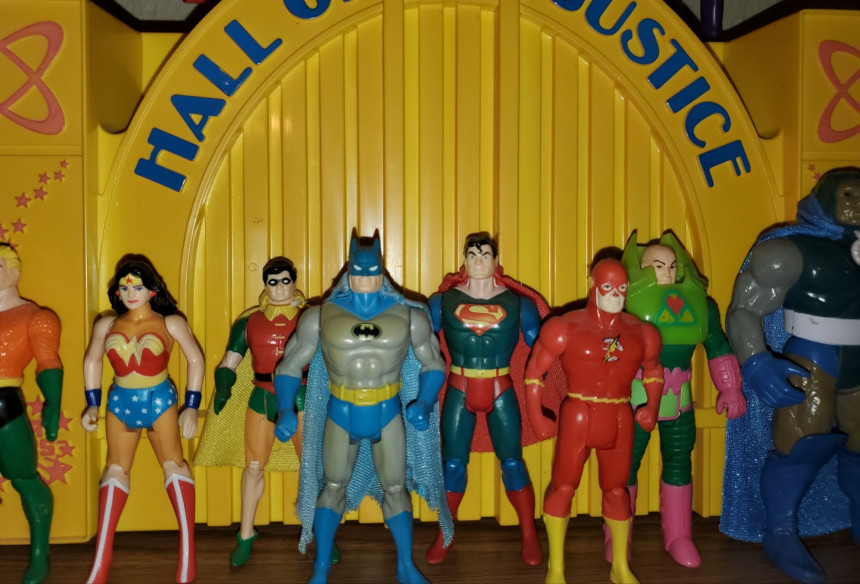
With Star Wars on its post-Return-of-the-Jedi wane, Kenner looked for a new action figure line in a familiar place: the pages of DC Comics. After acquiring the master toy license from DC, Kenner introduced Super Powers, a line that would include characters from the comics and the popular Super Friends animated series. The thing that separated Super Powers from previous super-hero lines was the incorporation of a “power action” into each figure that activated at the squeeze of arms or legs. Superman punched, Robin karate-chopped, Wonder Woman crossed her bracelets in her bullet-blocking pose, Flash ran, and so on. When the Martian Manhunter was introduced in the second series, it marked the first time that all seven original members of the Justice League were available in toy form (Manhunter and Green Lantern were absent from the earlier Mego line). The third series was marked by poor distribution, leading to certain characters like Cyborg and Mister Miracle to be extremely rare (and thus, extremely expensive on the after-market). The line went under after that, but is fondly remembered and actively sought by collectors. The 6-inch DC Universe Classics line of the 2000s would take pains to include every character from Super Powers, even characters specifically created for the line like Golden Pharaoh.
1984: Transformers
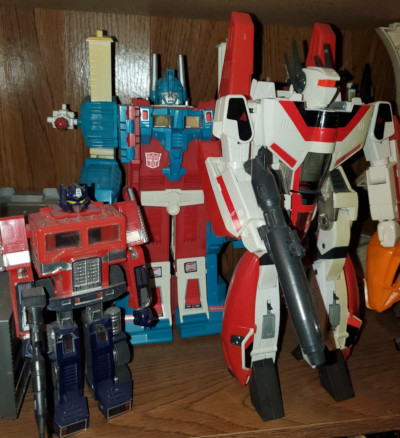
Robots in disguise! More than meets the eye! Transformers have almost as many catchphrases as they do variations. The original Transformers series came to the U.S. when Hasbro licensed a bunch of unconnected changing-robot toys from various companies. Working with Marvel in a deal reminiscent of their success with G.I. Joe: A Real American Hero, Hasbro worked out the launch of a comic book and animated commercials. Comic legends Jim Shooter and Dennis O’Neil put together a broader backstory, with O’Neil naming Optimus Prime. Bob Budiansky named Megatron, filled out the names and personalities of many other characters, and wrote dozens of the comics; he also wrote many of the character bios that came with the toys. Transformers have adapted with the times, finding ongoing success in the toy aisles as well on TV, in comic shops, and on the big screen with a hit film franchise.
1985: Nintendo NES
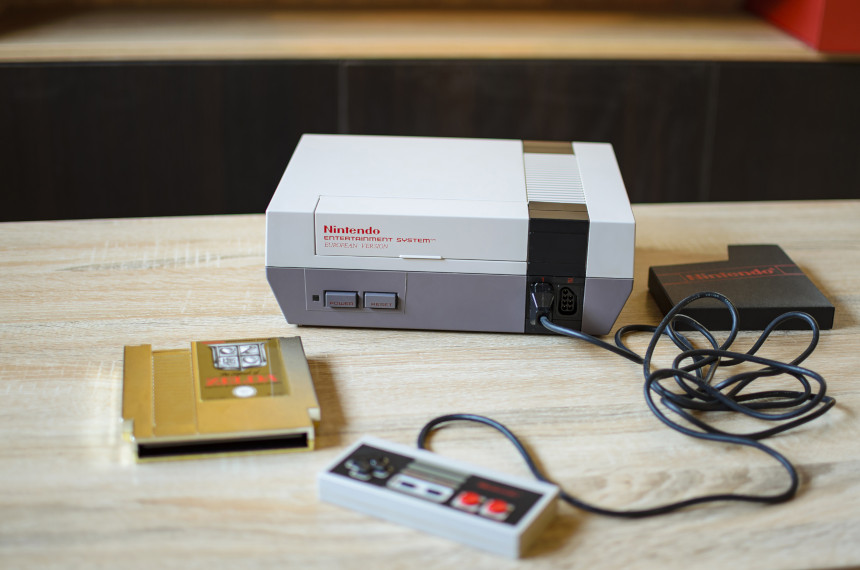
Console games were downswing in the States with the Nintendo NES arrived. The system ignited a boom that has basically never stopped. The NES established Mario and his collective universe as pop culture icons while introducing game after game that sold millions. This major launch has allowed Nintendo to put out innovative systems and games with regularity, from the GameBoy to Pokémon to the Wii to the Switch, Nintendo keeps finding new ways to appeal to a worldwide gaming audience.
1985: Teddy Ruxpin
An original Teddy Ruxpin commercial (Uploaded to YouTube by Mark Precilla)
The animatronic storytelling teddy bear surprised everyone by becoming the best-selling toy of both 1985 and 1986. Combining the cuddliness of a plush bear with animatronic eyes and mouth and a library of books and tapes (later, books and cartridges, and later still, via app), Teddy Ruxpin combined play and learning experiences (as the kids could follow the story with the book) in a new way.
1990: Super Soaker
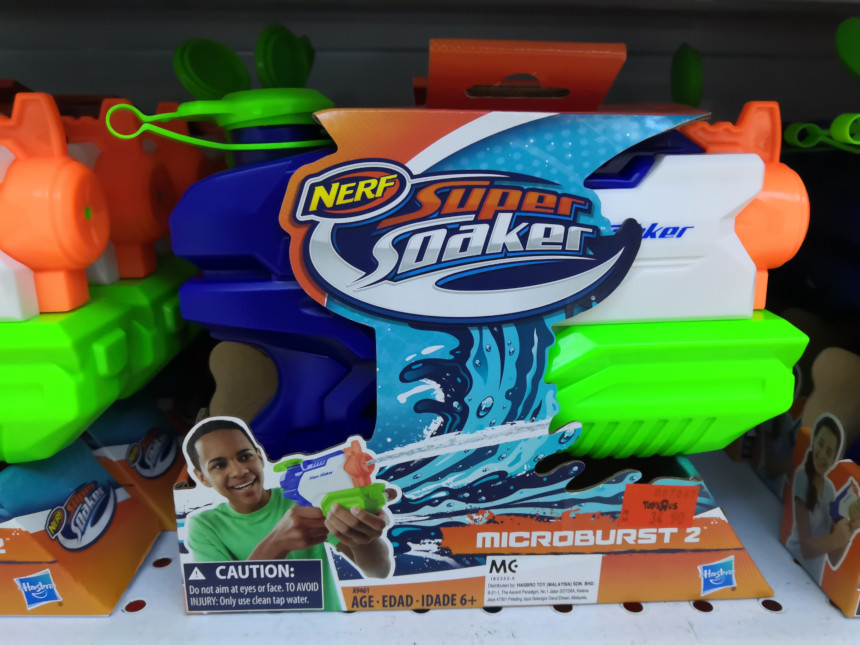
“A water gun?” you may ask. True, but the Super Soaker is a water gun in the same way that an Indy car is a covered wagon; they’re sort of the same idea, but one is on an entirely different level. Lonnie Johnson and William Raucci put the original concept together in 1989; when it came out from Larami in 1990, the pump/continual-spray blaster was called the Power Drencher. The following year, the concept was renamed the Super Soaker, and the sales dam burst. Two million units sold in 2001, beginning the path toward more a billion dollars in total sales since then. Sold today by Hasbro under the Nerf line, the various sizes and models of the Super Soaker continue to be perennially popular.
1990: WWF Hasbro Action Figures
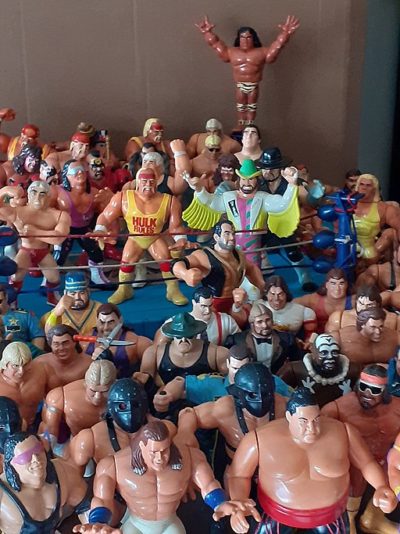
Hasbro’s WWF line wasn’t the first wrestling line, but it put a premium on fun. Combining Super Powers-style power-action wrestling moves with colorful and vaguely cartoonish interpretations of the real-world grapplers they portrayed, the WWF line was an instant hit. Eleven series of figures, including tag team two-packs, wrestling rings, and other accessories were released in five years. When the popularity of wrestling hit a downturn prior to being reignited by the Monday Night Wars of the late ’90s, the line went away. In 2017, Mattel, the current licensor of WWF (now the WWE) products, began to produce a Retro line of figures in a similar scale and style; that line includes stars of today and other wrestlers who were part of the late ’90s resurgence, such as The Rock, Stone Cold Steve Austin, and Mankind.
1992: Nerf Blaster
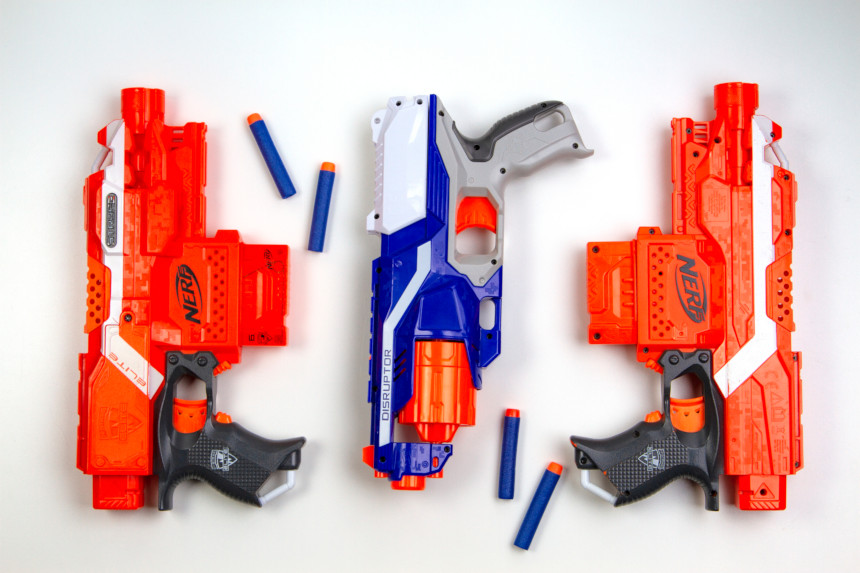
Nerf really began in 1970 with the Nerf ball from Parker Brothers. Marketed as the “world’s first indoor ball,” it traded on its softness and surprising durability (though not invulnerability) and became popular. Nerf products encompassed a variety of sports and game takes, from footballs to ping-pong. However, Nerf found a new life in 1992 when the first officially identified Nerf Blaster appeared. Pairing soft Nerf darts with increasingly more sophisticated dart guns, the Nerf Blaster line has grown exponentially in size and scope. Toy Nerf guns have been made based on weapons made famous in Fortnite, HALO, and other elements of pop culture; there have even been Nerf bows.
1996: Tickle Me Elmo
Tickle Me Elmo commercial (Uploaded to YouTube by Hasbro)
We realize that Elmo is not the favorite of every mom and dad. The little red denizen of Sesame Street has been polarizing to parents, but the kids seem to love him. That’s particularly true in his various Tickle Me Elmo incarnations, a series of electronic dolls that laugh, sing, dance, and more. Like the Cabbage Patch Kids before him, Elmo triggered some actual inter-aisle combat in 1996. Many more iterations have been released over time, such as Chicken Dance Elmo. Other characters, like Cookie Monster and Ernie, have also joined the line.
2001: Bratz
A promotional video for Bratz Party Dolls (Uploaded to YouTube by Bratz)
The 10-inch fashion dolls created by Carter Bryant broke the Barbie mold by embracing a more stylized design, of-the-moment clothes, and an inherent brand of diversity. After a year of struggle, the dolls took off, eventually moving 125 million units in five years. The original four dolls kicked off separate, related lines and a whole raft of multimedia extensions and adaptations. Over the years, Bratz maker MGA Entertainment was entangled in a number of lawsuits, including one from Mattel alleging that Bryant creating Bratz while working for them. Although everything was resolved in MGA’s favor after several years, those issues did slow the momentum of the brand. A new reboot of the line is imminent at this writing.
2002: Marvel Legends
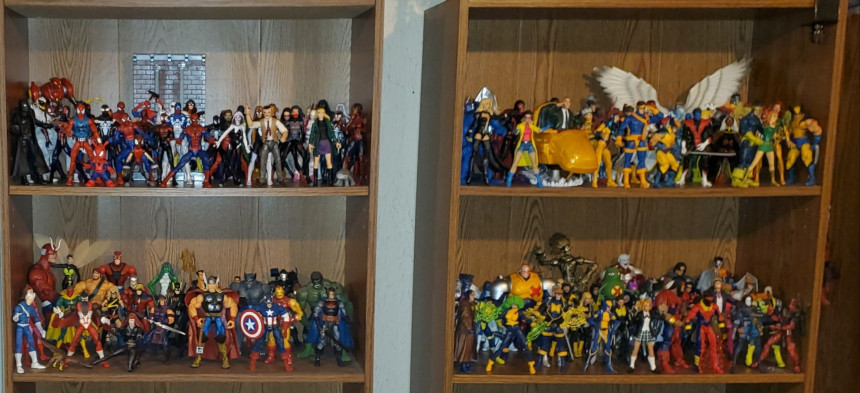
The most comprehensive action figure line based on the characters of the Marvel Universe, the 6-inch scale Marvel Legends line has been a fixture on the shelves for almost 20 years. Launched by Toy Biz in 2002, it was taken over by Hasbro in 2006 when they acquired the Marvel license. Distinguished by super-articulation (with many characters have more than 20 moveable joints), the highly-detailed and incredibly poseable line has been an ongoing hit with fans and collectors. Marvel Legends also pioneered the “Build-A-Figure” concept, in which each figure in an assortment comes with one piece of another character; for example, buying six figures with BAF pieces from the May 2020 “Avengers: Gamerverse” assortment would give you the pieces needed to build the villain Abomination. The Legends brand team at Hasbro has regular online chats with collectors, displaying new products and gathering fan input. With more than 100 figures released each year, and with ample support from Marvel films and comics, Marvel Legends shows no signs of getting snapped in non-existence anytime soon.
2011: Funko Pop! Vinyls
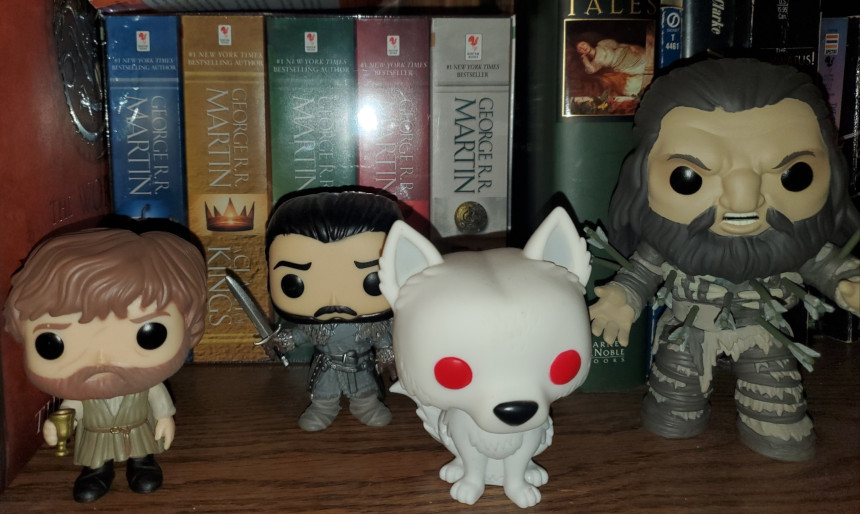
Bobblehead dolls and vinyl dolls or figures have been extremely popular around the world for decades. But something about the Funko Pop! line just clicked. The vinyl figures, encompassing just about every known pop culture license in history, from film to TV to comics to anime to music to sports, are a fixture in seemingly every store. And the Pops aren’t just limited to fiction; real people like Albert Einstein, Stephen King, LeBron James, and Bill Nye the Science Guy can occupy shelf-space alongside the Fantastic Four, the cast of The Office, and the Universal Monsters. As a company, Funko holds more than 1100 licenses for different companies, characters, and properties. Which means that if there isn’t a Pop for it, there probably will be.
Featured image: (Pit Stock / Shutterstock)
Become a Saturday Evening Post member and enjoy unlimited access. Subscribe now
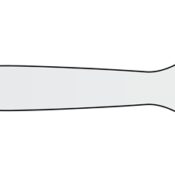
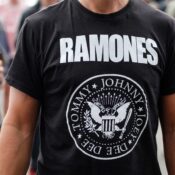

Comments
Have to admit that Super Soaker is STILL a lot of fun in the back and front yards on hot days with Kathy at the her Mom’s house, even though I used to be tempted to give Helen a little blast for embarrassing me more than a few times at Holiday gatherings in the past!